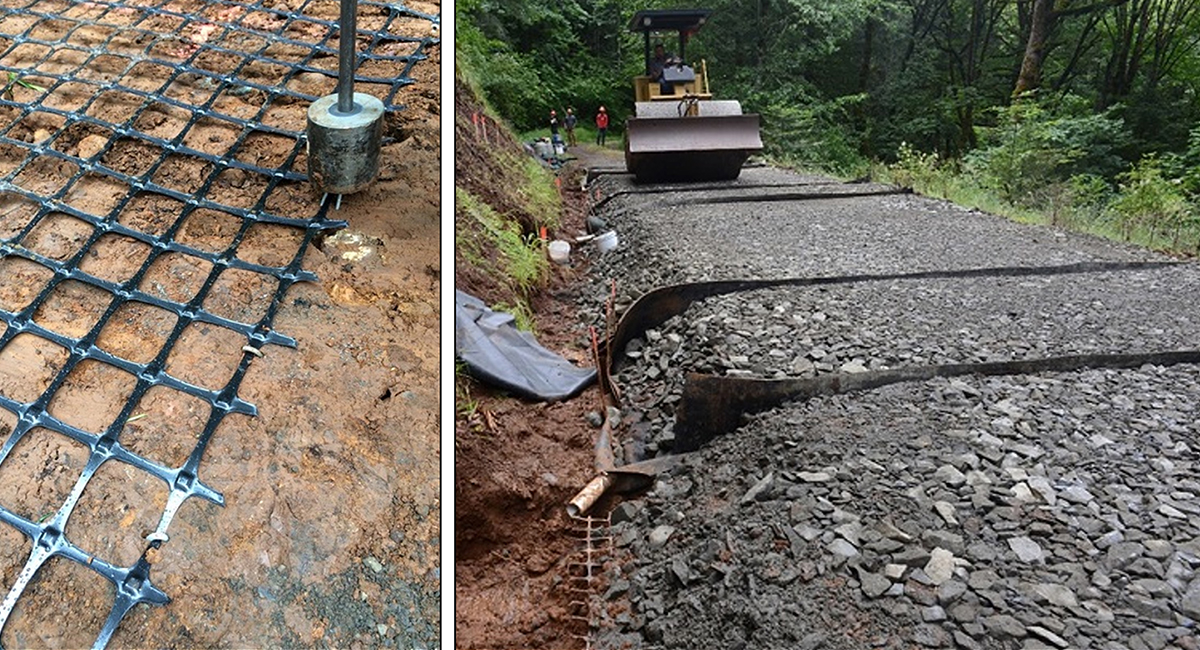Researchers: Ben Leshchinsky, Kevin Boston, Erica Kemp
Study Objective: Test the potential of geosynthetic materials to sequester road sediment and improve road performance during wet-weather hauling.
Summary: Aggregate roads are the primary means of access to managed forestlands in western Oregon, but may facilitate sediment transport during rainfall, especially with traffic from heavy trucks. This transported sediment, typically in the means of suspended sediment or turbid effluent, may have detrimental effects on aquatic ecosystems, especially when roads are in proximity to creeks, streams and rivers. However, due to past construction practices and difficult terrain, many existing roads are stream-adjacent, and may require retrofitting to address potential delivery of fine sediment from its surface during rainfall. To evaluate a potential treatment to this problem, a heavily-instrumented field test was performed on a reconstructed aggregate forest road in Western Oregon which sought to test the potential of geosynthetic materials to sequester road sediment and improve road performance during wet-weather hauling.
Publications:
- Kemp, E., Leshchinsky, B. and K. Boston. 2016. Case Study: Evaluating Road Performance and Sediment Generation during Simulated Wet Weather Hauling. Eur J Forest Eng 2(1): 22-34.
- Kemp, E. 2015. Sediment Transport Prototypes: Novel Methods to Disconnect Forest Roads from Streams. MS Thesis. 93pp.

Dunn Forest test track configuration: road slopes downward at 4% grade from left to right
